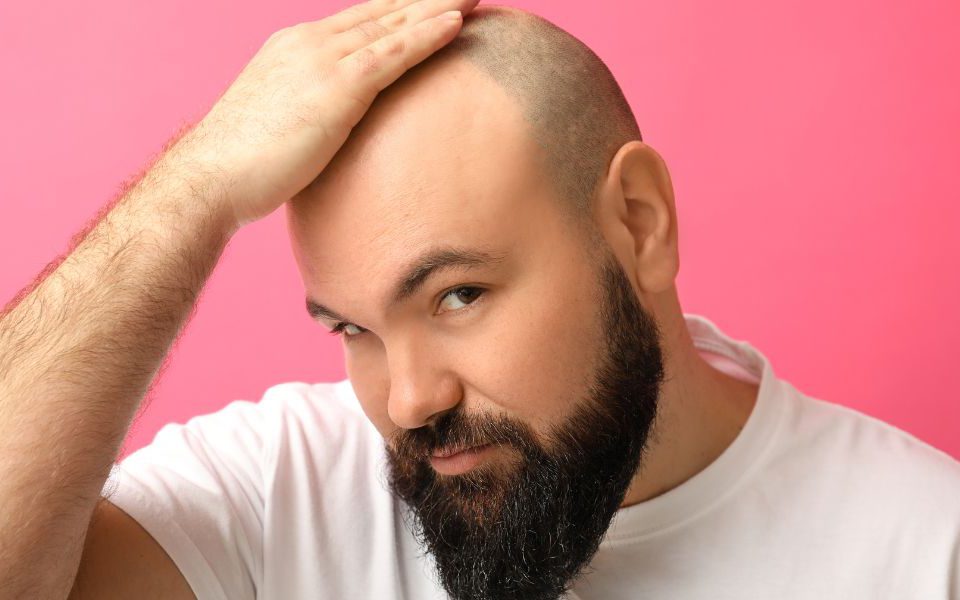- Have any questions?
- +91 80815 98454
- pinnaclepswh@gmail.com
Top 5 Myths About Gynecomastia

How to select the right surgeon for scar revision surgery?
October 17, 2022
Liposuction Vs Tummy Tuck: Which Procedure Is Best For You?
December 30, 2022Top 5 Myths About Gynecomastia

The human body changes with age. Specifically for men, the body undergoes many changes as they grow older, especially during puberty. For example, some men develop enlarged breasts as they mature. However, such enlargement usually tends to be transient, firm, and symmetrical. If the breasts enlarge too much and become tender, the condition is called gynecomastia.
Gynecomastia, infamously referred to as ‘man boobs’, is a common condition in which men develop breast tissues that are considered more enlarged than usual. More than half of the males in the world experience gynecomastia, which disappears as they age. The most common sign of gynecomastia is the presence of excess tissue around the nipple region or enlargement of the breasts. Although it is not a life-threatening condition, it can have a severe and significant impact on men and their self-esteem. As a result, men usually start wearing loose-fitting shirts to make them less noticeable. If you have gynecomastia and it bothers you, then you must consult an experienced plastic surgeon about the possible treatments.
Gynecomastia may be a common disorder, but there is a lot of misinformation surrounding it. In this blog, we have endeavored to clear some of the common myths about gynecomastia. Here are a few myths related to gynecomastia:
Myth #1: Gynecomastia is caused by obesity or a poor diet
It would be best if you kept in mind that gynecomastia does not develop only in overweight males. It can develop in underweight or males with average weight. In addition, gynecomastia occurs when a man develops actual breast tissue, not just a bit of fat in the chest area.
The primary reason for developing gynecomastia is an imbalance between testosterone and estrogen hormones. Both men and women produce both testosterone and estrogen hormones. The relative balance between the two helps suppress the growth of breast tissue in males while enhancing breast tissue growth in women. So, the growth of breast tissue is determined by the levels of estrogen in the body. When the testosterone level dips and estrogen levels increase, there is a noticeable increase in breast tissue in men. Some disorders generally cause a decrease in the concentration of testosterone in male sex organs. Such conditions may arise due to genetic conditions like Klinefelter’s syndrome or infection. Testicular cancer and renal failure can also lead to gynecomastia.
There is very little information about the relationship between weight gain and gynecomastia. However, it is known that when a man gains weight, it often accumulates in areas above the waist, like the abdomen, shoulders, and face. This fullness can give an appearance of female-like breasts. Since this process occurs gradually, one may not notice. Fat accumulation in the chest area is often called “pseudogynecomastia” or fake gynecomastia.
Myth #2: Gynecomastia is a rare condition
This is a very common myth that most people believe in. However, gynecomastia is one of the most common male breast disorders. It affects approximately 50-65% of males worldwide. It is estimated that as many as 79% of boys in early to mid puberty experience gynecomastia due to the hormonal changes that occur during puberty.
Additionally, men with certain health conditions like hypothyroidism or those who take recreational drugs are at a higher risk of developing gynecomastia.
Myth #3: Gynecomastia only affects older men
It is a common belief that gynecomastia occurs only in older age groups. However, this is false. While it is true that older men tend to have a greater risk of developing gynecomastia than younger men, it can occur at any age.
Gynecomastia can occur in infants. More than half of the babies are born with enlarged breasts. The increase in the size of the breasts is due to the mother’s estrogen. Generally, the swollen breast goes away within two to three weeks after birth.
Similarly, gynecomastia can be caused due to hormonal changes that occur during puberty. The condition usually develops between 10 and 12 years and most commonly occurs between 13 and 14. However, the condition persists beyond 17 years in some individuals.
Gynecomastia in older men is usually due to a decrease in testosterone production. As a result, older men tend to have higher body fat, as a result of which the concentration of estrogen increases in the body. These changes can enhance the growth of breast tissue. Also, certain health conditions like renal failure, liver disease, and testicular cancer are more common in the elderly. These conditions can also cause gynecomastia.
Hence, age is not a factor that determines the occurrence of gynecomastia.
Myth #4: Gynecomastia goes away on its own
It is a common misconception that gynecomastia improves by increasing exercise intensity and performing exercises focusing on the chest area. This is true only when the breasts look enlarged because of pseudogynecomastia (the accumulation of excess fat in the chest area). On the other hand, gynecomastia occurs due to the proliferation of breast tissue and cannot be reversed by exercising or going on a diet.
It is observed that in some cases, gynecomastia resolves independently as soon as the hormonal imbalance is corrected. But in most cases, the condition requires surgical intervention to correct it. Gynecomastia surgery or male breast reduction surgery is a reliable treatment option for men with gynecomastia that doesn’t resolve when hormonal disbalance is corrected or when medications related to the condition are adjusted.
Depending on the severity of the condition, there are a few options for surgery. A man with limited breast tissue but a considerable amount of fat in the chest area will benefit the most from liposuction.
Severe cases of gynecomastia require a more complicated surgery, which is usually a combination of liposuction and excision of the breast tissue.
Myth #5: Gynecomastia surgery is expensive and painful
Many men are reluctant to seek treatment for the condition. Some believe that surgical intervention is expensive and painful and that it can lead to complications. However, this is not true.
There is no need to be concerned about feeling pain during gynecomastia surgery or male breast surgery. Usually, the surgeon administers general anesthesia to the patient, which helps them remain unconscious during the procedure. Thus, most patients do not feel any pain or discomfort during surgery.
In general, surgical techniques are well tolerated and produce good results. Newer and less invasive techniques require a minimal surgical incision. These minimally-invasive methods are associated with lower risk of complications, faster recovery time, and reduced pain and scarring.
One may feel discomfort and tenderness in the initial few days, which eventually improves within a week. The patient may be able to get back to work in about two to four weeks. One should not expect to see the results for about three to six months following surgery. This is because it takes time for the breast tissue to heal and reduce swelling. However, the results are usually permanent once the healing process is over.
The cost of surgery depends on the type of procedure and the extent of gynecomastia, which can be determined during a consultation with a surgeon.
Gynecomastia can be an embarrassing condition. But it is not something that men have to live with. Gynecomastia surgery is a safe and effective way to get rid of gynecomastia permanently.
Do not be too quick to believe these myths and misconceptions. Schedule a consultation with a plastic surgeon to learn more about this condition and how it can be treated. Dr. Shree Harsh is a Board-Certified plastic surgeon of Pinnacle Plastic Surgery Clinic, Lucknow, with many years of experience with male breast surgery. He will work with you to find the treatment option that works best for your needs and goals. Call us now at +91 80815 98454 or email us at pinnaclepswh@gmail.com to book an appointment.

